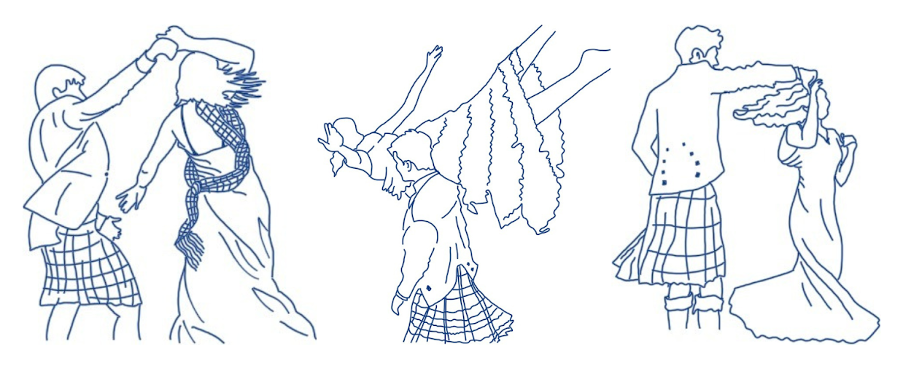The Theory Behind a Perfect Movie Soundtrack
- Naina Zilbermints

- Oct 28, 2022
- 4 min read
When thinking of a great film, we often consider its cinematography, script and costume, but rarely do we acknowledge what makes up 50% of films: sound. Particularly, the vigorously curated soundtrack of the film. I’m not talking about original compositions like Hans Zimmer’s scores, but rather the Jukebox. Think of this as an antithesis of our Album Study column — the soundtrack is a sort of ultimate playlist.

To play a game of word association: I say ‘Don’t you (forget about me)’ what that comes to mind isn’t the Simple Minds 1985 hit, but John Bender cathartically pumping his fist into the air as the credits roll over The Breakfast Club. Or if you hear The Righteous Brothers ‘Unchained Melody’, what comes to mind is Patrick Swayze and Demi Moore doing pottery in Ghost. These are all fantastic examples of the ‘needle drop’ when filmmakers use a piece of popular music in their films. While the ‘needle drop’ doesn’t embody the soundtrack, it’s a crucial part of what makes it good. It makes you pay attention.
Foregrounding the music invites the audience to feel what their hero is feeling at that moment. As Bowie’s ‘Heroes’ erupts, Charlie, standing up in the back of a moving car, proclaims “we are infinite”. The audience, like the protagonist, is overcome with emotion. Conversely, music can also be used to project irony. As Patrick Bateman brutally murders Paul Allen, we listen to the upbeat ‘Hip to be Square’. The audience is made to feel uneasy through this dichotomy.
Now it's important to differentiate between a film that achieves a good overall soundtrack or just a great needle drop moment. While the needle drop is foregrounded, the overall soundtrack is at times subtle and at others loud and in your face. The soundtrack, like the actors’ performances, aims to achieve the ‘show notdon’t tell’. It’s the music’s varied interaction with the narrative, characters and audience that ultimately adds dimension to the film.
One great example of the amalgamation of the above is Wes Anderson’s The Royal Tenenbaums. As Margot steps off the bus to reunite with her lovelorn brother Richie, Nico’s ‘These Days’ begins to play. Tonally the warm guitar and longing violin reflect Richie’s longing for Margot in this scene. Lyrically the proclamation “I seem to think a lot about the things that I forgot to do” rings true for a romance that never had the chance to flourish. Later in the film, we get the antithesis of this warmness, as Elliott Smith’s ‘Needle in the Hay’ plays during Richie’s suicide attempt. Smith’s song, notably about the excruciating pains of addiction, surrounds the audience with Richie’s feelings. The audience begins to understand. Elliott’s scratchy vocals and consistent down strums on his guitar mimic the rawness of Richie’s actions.
But excellent film soundtracking can be used in more ways than one. Baby Driver prioritises its music as the soundtrack fuels action. Throughout the film, all scenes where Baby listens to music are edited in perfect synchrony with the beats of the music. As the gang is robbing a bank, Baby plays ‘Bell Bottoms’ on his iPod, and the scene is flawlessly in sync with the beat. The music, once again, allows the audience to live through Baby’s eyes.
This type of diegetic soundtrack is used in a more obvious way in Dazed and Confused. The film is about teenagers hanging out, so music only ever plays from the teenagers’ car stereos. As ‘Low Rider’ plays on the radio, and some characters sing along to the song and others actively interact with it by turning the volume down to speak, we are invited to hang out with the characters.
In my opinion, you can’t talk about great film soundtracks without mentioning Forrest Gump. The film’s soundtrack receives the highest praise: “it fits perfectly”. Forrest Gump is an exploration of the American timeline from the 1950s to 80s, and so its music too follows this timeline. It’s not only an exploration of the historical events that took place but also the music that defined those decades. The music is fundamentally linked with the narrative as it is a crucial part of the film’s world-building. This was a notoriously expensive soundtrack to produce, as it included the likes of Elvis, Aretha Franklin, Fleetwood Mac and many more. The studio rejected it until Zemeckis presented the soundtrack at its first screening for Paramount. Approval was instant. Indeed, “the Forrest Gump soundtrack isn’t [just] the soundtrack of a movie; it’s the soundtrack of America in the 20th century”. Yes, every song throughout the film helps the audience relate to its characters' feelings, but this tells the story — now so iconic it sits with us for the rest of time — Gump’s journey through the ever-changing America.
Clearly what makes a good film soundtrack is not a matter of strict binaries, as soundtracking can be used in so many ways to complement the storytelling. A good soundtrack should be multifaceted, in that it reciprocates the scenes’ tone, gives insight into the characters’ psyche during crucial moments, allows the audience to indirectly feel included in the action and at the end of the day sounds good in accompaniment to the visual.
The time has come, the time to choose (or be chosen by…?) your academic family. For some, this is the daunting challenge — for others,...






Comments